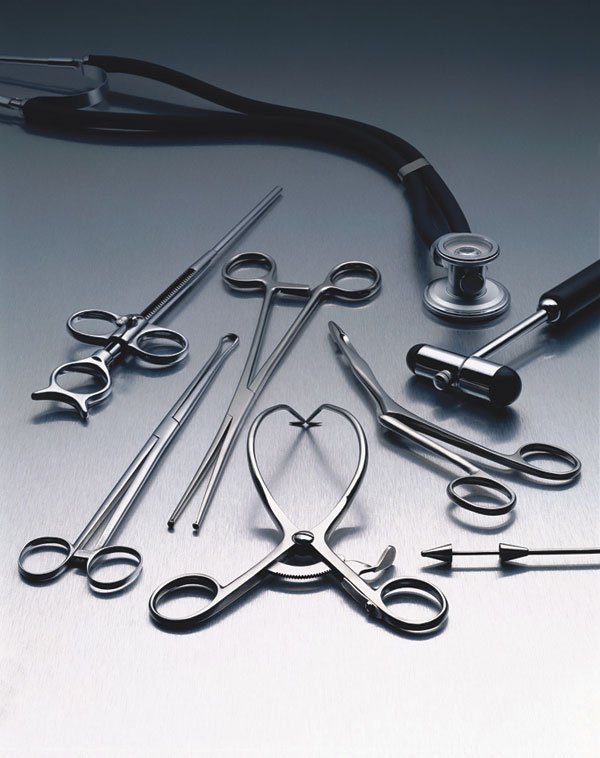After 10 award-winning seasons in prime-time, Michael Crichton’s
ER is still one of the top contenders in network programming. And
watching actors yell out mind-boggling phrases like,
”
chest tube, CBC, chem seven
”
week after week is certainly enthralling, but what does it all
mean?
After 10 award-winning seasons in prime-time, Michael Crichton’s ER is still one of the top contenders in network programming. And watching actors yell out mind-boggling phrases like, “chest tube, CBC, chem seven” week after week is certainly enthralling, but what does it all mean?
The medical world, for the obviously necessary purpose of abbreviation, has its own language of seemingly endless letters – an alphabet soup of descriptions, diseases, and qualifiers that is nearly impossible for a member of the masses to dissect. Until now. Behold, the chalice of wisdom … okay, maybe just a smattering of the indecipherable muck you’ll find on the average hospital chart.
AMA Against medical advice; against the professional advice of a doctor (generally due to concerns for a patient’s immediate health).
CBC Complete blood count; a count of blood cells that includes both the number of red and white cells.
cc Cubic centimeters; common unit size for intravenous drug measurement
CC 1. chief complaint; 2. commission certified; 3. crucial condition; 4. current complaint
Chem 7 A group of chemical tests (seven of them, to be exact) that are performed on serum, the portion of blood that does not contain cells. These measurements can help doctors to pinpoint a diagnosis by telling them how much of each substance is being produced by the body. Amounts that are abnormally high or low may be reflective of more serious issues the immune system is facing.
CT Computed tomography (also called a computer axial tomography, or CAT, scan), a computerized scan that constructs a 3-D model, including bone, soft tissue, muscle and tumor growth, of a body part based on a series of cross-sectional images.
DNR Do not resuscitate order; an order banning doctors from using extreme measures in their effort to save the DNR holder’s life, including the use of CPR, defibrillation or many other lifesaving techniques and devices.
EEG Electroencephalogram; monitors electrical activity in the brain via electrodes attached to the patient’s scalp. This study of the brain’s electrical current can help doctors to diagnose brain problems like epilepsy or non-febrile seizural disorders.
EKG Electrocardiogram; the same principal as an EEG, but applied to the function of the heart rather than the brain.
PICC Line Peripherally inserted central catheter; a long, flexible tube inserted in the arm and threaded to a large vein just above the heart. This tube allows for continuous or repetitive insertion of intravenous drugs without the need to find a vein each time. Some can stay in place for weeks or months at a time.
TIA Transient ischemic attack; a small stroke, generally accompanied by blurred vision, slurred speech, numbness, or paralysis that is frequently a sign of more serious issues to come.
Ready for med school yet?
This list represents a small portion of the medical terminology whose definitions are available online.
For more, please visit one of our sources: www.MedTerms.com, State University of New York Upstate Medical University (www.upstate.edu), University of California, San Francisco Children’s Hospital (www.UCSFHealth.org /childrens), or Merriam-Webster’s Medline Plus Dictionary (www2.merriam-webster.com/cgi-bin/mwmednlm).













